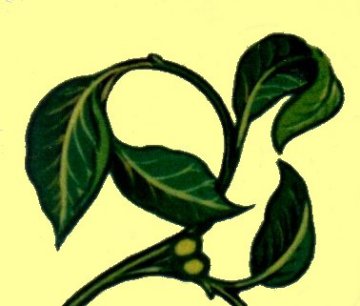 |
BRYANT G BAYLIFFE |
 |
| Section 1
Barrister of Lincoln's Inn (1563-1644)
|
||
|
|
|||
| Section | 1 | Title and contents | |
| ditto | 2 | Henry Bayliffe - The Story | |
| ditto | 3 | Admission of Henry Bayliffe to Lincoln's Inn 1581 | |
| ditto | 4 | Signature of Henry Bayliffe 1581 | |
| ditto | 5 | Signature of Henry Bayliffe 1588 | |
| ditto | 6 | Genealogy of Pleydell of Midgehall, Lydiard Tregoze, Wilts. | |
| ditto | 7 | Arms of Bayliffe impaling Pleydell and Reason Quarterly | |
| ditto | 8 | The Gatehouse, Lincoln's Inn. Henry Bayliffe's Chamber 1600 | |
| ditto | 9 | Chippenham Town Council. Bound 17th Century Council Minutes | |
| ditto | 10 | Henry Bayliffe moves out of the Borough 1615 | |
| ditto | 11 | Quarter Sessions, Devizes, Wilts. Includes Henry Bayliffe 1616 | |
| ditto | 12 | Original Heralds Visitation Notes for Bayliffe 1623 | |
| ditto | 13 | Henry Bayliffe elected bayliffe [Mayor] of the Borough. 1630 | |
| ditto | 14 | Recognisance signed by Henry Bayliffe. 1635 | |
| ditto | 15 | Henry Bayliffe allowed to build burial vault in St. Andrew's Church 1638 | |
| ditto | 16 | Genealogy of Seymour of Savernake, Wilts. Dukes of Somerset | |
| ditto | 17 | Eleanor Scott (Bayliffe) Memorial Tablet in St. Andrew's Church. 1664 | |
| ditto | 18 | Painting of St. Andrew's Church, Chippenham. E. Dowding 1810 | |
| ditto | 19 | Yelde or Town Hall, Chippenham, Wilts. | |
| ditto | 20 | Council Chamber, Yelde Hall, Chippenham, Wilts. | |
| ditto | 21 | Genealogy of Danvers of Baynton, Edington, Wilts. | |
| ditto | 22 | ditto of Danvers, Stradling & Dauntsey of Dauntsey, Wilts. | |
| ditto | 23 | Notes and Sources. | |
| Section 2 | |||||||||||||||||||||||||||||||||||||||||||||||||||||||||||||||||||||||||||||||||||||||||||||||||||||||||||||||||||
|
Barrister of Lincoln's Inn, London, Middx. ****** Henry's family was armigerous and had enjoyed the patronage of the noble family of Seymour (St. Maur) for many years as agents, lawyers, tenants, etc, probably from well before the Reformation. The Seymours, already benefiting from marriages to the heiresses of Beauchamp and Esturmy, increased their land holdings by gift and acquisition from Henry VIII, and afterwards when Edward Seymour, Duke of Somerset was Protector. John Bayliffe, Henry's younger brother became a Barrister and Under-Treasurer of the Middle Temple and is the subject of a separate account. By the late 1500s his family held several small manors by lease from the Protector's son Edward, Earl of Hertford including Castle Cary, Somerset, Monkton juxta Chippenham, and Weavern Mill in Slaughterford, both in Wiltshire. His brother William also held 'The Sign of the Bull' or 'The Bull', now the Angel Hotel, Chippenham, from the Earl. Henry's father William had been admitted as a student of the Middle Temple 27 November 1559 and on completion of his training had, taken over the lease of Monkton from Gabriel Pleydell in 1567. On the death of his mother Gabriel moved back to his family home of Midgehall, Lydiard Tregoze, Wilts., another Seymour manor. William was called to the Bar, becoming the Member of Parliament for Chippenham in 1572, and in 1578/9 was an Under-Sheriff of the County, the same year that the Earl of Hertford became a Commissioner of Musters. William was added to the Commission of the Peace for Wiltshire in the last few years of the century and the Earl, who chose to keep his distance from the Court at London became Lord Lieutenant of the County in 1601. Henry, the eldest son and heir of William Bayliffe and Agnes Pleydell was born in 1563. As heir apparent he was given the best education available, and after matriculation at Trinity College, Oxford, 20 March 1579 aged 15 years, he was admitted to Lincoln's Inn 13 April 1581. He paid a reduced fine since he was by then already a member of the New Inn in Chancery. The ten Inns of Chancery originated as lodgings for students and never enjoyed the privilege of the Bar, which was restricted to the Inns of Court. By Tudor times they had attached themselves to a particular Inn of Court, and students would enjoy reduced admission fees if they moved to the higher Inn of Court. Gyles Estcourt and Olyver St John1 were manucaptors (stood surety) for Henry. There is no surviving evidence of his call to the Bar in Lincoln's Inn, but he is described as a Barrister when amerced (fined) for default of learning excercises (vacations & moots) in 1592 and thereafter2. Lincoln's Inn Library provides two facsimiles of examples of Henry's signature during these early years. The first in 1582, a year after his admission is not unlike his father's at a comparable age; full of Elizabethan embellishment and trying to impress his colleagues. The later one in 1588 is only six years on, but is now more restrained and reflects a more professional and individual style, rather than following the Elizabethan fashion. This signature alters only slightly during the rest of his life as can be seen from his later years as a Justice of the Peace in Wiltshire. He was first admitted to a chamber at Lincoln's Inn in 1588 and his chamber-fellow was a Mr Edward Skipwith3. Lincoln's Inn would have provided cheap board and lodging. In 1598 he was amerced for not undertaking the office of Steward of the Reader's Dinner4. On 7 November 1600 Henry and Edward Skipwith were allocated a newly built second floor chamber near the Gatehouse. He held the office of Pensioner for the period Michaelmas 1607 to 14 November 1608, and Butler in 16135. Henry stood surety for the following new members of the Inn: 1582 Leonard Ivye, also of Wiltshire & New Inn; 1588 William Dalton of Yorkshire; 1599 Richard Burley of Hampshire; 1608 Henry Maundrell of Wiltshire; 1613 Richard Browne of Calne, Wilts., and 1614 Thomas Wilbraham of Nantwich, Cheshire. Due no doubt to his being in regular attendance at chambers in London, he became the Member of Parliament for Malmesbury in 1586 and 1589. When Henry married Anne Danvers about 1599 he was 36 years of age. Anne Danvers was the daughter of Henry Danvers of Baynton, Edington, Wilts., who was the brother of Sir John Danvers of Dauntsey, Wilts. The family had lineal descent from King Edward I, Plantagenet, through Courtenay and De Bohun. This marriage into one of the leading families in the country must have given Henry's father great pleasure. The story and genealogy of the family is brilliantly told by F.N.Macnamara in "The Memorials of The Danvers Family" published in 1894; arguably one of the finest examples of this type of work ever written. The lineage charts at the end of this account give a good picture of how Anne fits into this remarkable family, and we can at least get a flavour of the time when she married Henry from her three notorious cousins. Only five years earlier the two elder brothers Sir Charles and Sir Henry, had to flee the country after their alleged involvement in the murder Mr Henry Long at Corsham. In 1598 their outlawry was terminated on certain conditions and in the year of Anne's marriage to Henry Bayliffe, Sir Charles Danvers was given a Colonel's commission with Essex's army in Ireland. His association with the Earls of Southampton and Essex led to the failed conspiracy to overthrow Queen Elizabeth I in her last years and his execution in the Tower 18 March 1601. Meanwhile Sir Henry was accepted back into the establishment, becoming Baron Danvers of Dauntsey in 1603, and the Earl of Danby in 1625. He is remembered for the botanic gardens at his home at Cornbury, Oxford, and died 20 January 1643. The third cousin, Sir John was the youngest and only 14 years of age when Anne Danvers married Henry. He was for many years an opponent of the Crown, culminating in his support for Parliament in the Civil War. He was on the Commission which tried King Charles I, and signed the death warrant, thereby earning the title 'Regicide'. All this was to end in grief for Sir John with his own death in 1655 after managing to offend both the Royalists and Cromwell. He is buried at Dauntsey. Henry lived in the Borough of Chippenham in the early 1600s, most probably at 'Le Porch' (later known as The Porch Tenement) in the High Street, and was helping the Borough with legal advice at this time. It seems his services were on a case by case basis, since a salaried post of Solicitor or Clerk to the Council had not yet been created. Accordingly the Council minutes for 1607 record an expenditure of 3s 4d for 'a pottle of Secke6 & a lb. of Suger given to Mr Bayliff of Mounckton, at what he gave advise & direction about the Assarte Lands & he woulde take noe other ffee'. On the 7 September 1610 the Minutes7 also record: 'Ffree ... Henry Bayliffe Ar.[Armiger] an inhabitant of the aforesaid Borough (being not born there or in) was admitted & made free to take benefit of the Borough Lands according to the Decree, & then paid for registeringe & recording his name as an inhabitant, also according to the Decree established ... 20s'. His father and mother William and Agnes were living across the River Avon at Monkton House only 300 yards away, but the daily management of Mounckton Farm was probably carried out by his mother and brother Hugh. No doubt they had a farm bailiff and following an indenture in 1601 his father passed the farm to them with obligations to make annual payments to family members over a 12 year period. Henry would have had little to do with the running of the family estate although it was now in his name being active in the law at Lincoln's Inn. Events were now moving apace. His father William who had died in August 1612 aged about 72 years was followed by Henry's wife Anne the following year, being buried in St. Andrew's Church on 16 April 1613. Henry had 4 sons and 2 daughters by Anne Danvers. Lucy the first born was baptised 23 September 1599 at St. Andrew's Church, Chippenham. She married Edward Barrett of Tytherton Lucas, Wilts. Gent., also at Chippenham 23 March 1620. Edward Barrett had been admitted to the Middle Temple 31 May 1619 being bound with the above John Bayliffe the Under-Treasurer, and Charles Danvers, Esquires. Edward succeeded his grandfather and as with most of the local gentry, paid the Knighthood Composition for Wiltshire in 16318. He paid £14 which compares with the £25 paid by his father-in-law Henry Bayliffe then of Monkton, living a mile away just across the River Avon. The eldest son William Bayliffe who later inherited Monkton from Henry was baptised at Chippenham 21 March 1601. He was 11 years of age when his grandfather died in 1612 with his father replacing him as a Wiltshire J.P. At the age of 17, he followed in his father's footsteps to study at the Inns of Court in London, being admitted to Lincoln's Inn 4 February 1618 as 'son & heir of Henry Baylyffe of Chippenham, Wilts. Armiger'. He was bound with Edmund Bullocke and Charles Gore of Alderton, Wilts. His father Henry had obtained permission the previous November for his son to be admitted to his part of the chamber on payment of £5, and in due time William was Called to the Bar 20 June 1625. It was William who arranged a new 99 year lease in 1666 for Monkton with the Seymour family. This enabled him to build the new Mansion House which was quite unlike the ancient farmhouse of the 400 acre Mounckton Ffarme. When a terrier of the Monkton Estate was carried out in 1829 remains of this were still to be seen, there being a note by the item for the Mansion House which read: 'including site of the ancient Farm House'. Eleanor the second daughter was born 1603 at Chippenham and married Jonathan Scott son of John Scott the younger of The Ivy, Chippenham, Gent, Clothier, at Chippenham 21 July 1629. Of six children born to John Scott the elder and Elizabeth Overbury from 1600-1608, Jonathan was the only one to survive the plague, with his mother also succumbing in 1611. During the Civil War, Chippenham was to suffer from the general deprivations caused by demands from both factions in the fighting. There was a continuing obligation to quarter and provision soldiers and horses in the town, the church and the Borough pastures and leazes. The incongruous situation which arose from having to support both camps, is demonstrated by a demand for a rate towards His Majesty's Provisions at the siege of Gloucester in the summer of 16439, and as one of the burgesses Jonathan Scott went to Gloucester after its relief by Essex in early September with John Ely10 about a £100 fine on the Borough. Eleanor died 24 February 1664 aged 61 years, and was buried at St. Andrew's, Chippenham. A Memorial Tablet is to be found in the Baptistry off the south aisle. Henry Bayliffe of Balliol College, Oxford. B.A., M.A. (1630) and Cambridge M.A. (1631, incorporated from Oxford), was the 2nd son of Henry Bayliffe and Anne Danvers. Born about 1606, he was elected a Fellow of Balliol College in 162811. He remained a bachelor, and we know that at the very least he lectured in Logic (1636) 12. Other subjects at the College included Classics, Rhetoric, History, Theology, and Modern Languages. The resident Fellows had to fill the various administrative posts of the college; Senior Dean, Junior Dean, Senior Bursar, Junior Bursar, and Notary. With only five or six resident Fellows at that time, they would virtually always fill one or other of the posts. In 1632 Henry was Senior Dean but that was because it was his turn rather than any sign of seniority. Henry received a Fellowship Stipend which he would have augmented by the usual practise of acting as a private tutor to undergraduates. There is no evidence that his career was affected by the Civil War, though with Oxford being the headquarters of Charles 1, and the later purging of intellectuals with Royalist sympathies by Parliament, there must have been some diverting moments. It is clear that with advancing age Henry became 'distracted', perhaps senile, and the College was seeking to replace him. In 1675 when he was about 70 years of age his sister communicated his resignation to the College, and he returned to live at the family home at Monkton. As head of the family Henry's eldest brother William of Lincoln's Inn made arrangements for him to have a chamber in the manor house, and in his Will13 made some 2 years before this on the 28 March 1673, and obviously concerned about Henry, he writes 'I doe hereby devise will and appoint that my pooure weake brother Henry Bayliffe shall be maintained in meate drinke lodging apparell and houserome fitt and convenient for him out of my estate during his naturale life untille Oathills14 shall come to his hands and possession if his allowance from Balliol College in Oxford may not be received'. William died shortly after making the Will, being buried at Chippenham 27 April 1673, hence the reason for a sister being involved in the resignation rather than the head of the family. Henry was evidently due to receive the income from Oathills which was a 10 acre meadow within Monkton Manor, extending from the south bank of the River Avon up to the London Road near the Packhorse Inn. To this day the name Oathills survives, being the name of an estate road built on the site. Henry of Balliol died aged about 81 years, and was buried at St. Andrew's Church, Chippenham on 16 March 1687. He was unmarried. A third son Charles Bayliffe of Chippenham was baptized there 1 November 1607. He was active during the repairs to St. Andrew's Church in 1633. The Churchwardens Accounts for the year ending 28 May 1634 read 'Mr Charles Bayliffe for his paynes in prosecuting the petition concerning the Tower & Steeple... 4s 6d'. Otherwise little is known of Charles. Edward Bayliffe of Chippenham, Weaver, was the fourth and last son of Henry and Anne born circa 1612. Henry, now a widower, was over 50 years of age and after 6 children born to his first wife Anne Danvers, he remarried. Just over a year after burying Anne, he married secondly Mary Hand on 26 May 1614, a local and much younger lady from Chippenham and set about moving over to Monkton as head of the family with his new bride. It has not been possible to find the baptism of Mary at these early dates, but it seems most probable that she was from the gentry or yeoman families of that name settled in the adjacent parish of Bremhill, and Stanley in Chippenham Parish. The Vicar of Bremhill from 1554-1583 was William Hand and it is reasonable to assume that Mary was a grand-daughter. John Ely, a kinsman of Henry Bayliffe married Anne Hand at Bremhill 14 October 1622 probably a sister or cousin of Mary. Under her husband's Will of course his mother Agnes Bayliffe (formerly Pleydell), could live at Monkton for the remainder of her life, with sufficient accommodation and household items for herself and a servant. Henry's move to Monkton is recorded in the Chippenham Borough Minutes as follows: '31 August 1615. Henry Bayliffe Esquire one of the burgesses of the said Borough did signifie in writinge under his hand that he is now whollie removed out of the said Borough and settled to remain at Mounkton and therefore could not soe convenientlye supplye the place of a burgess of the said Borough as he would wishe or otherwise might be desired and beinge willinge to be discharged of the same office & another inhabitante of the said Borough both for honestye discretion and peaceable disposition fitt for the place to be chosen in his roome...John Gale chosen'. From the time of his father's death in 1612 Henry succeeded him as a J.P., and was on the Commission of the Peace for Wiltshire for the next 32 years. Although the Justices were a very influential class, this was hard earned due to the onerous nature of the work which not only covered the administration of the law, but effectively the duties of Royal agents for local government in the absence of structures yet to be created. This period in the 600 year history of the Justices of the Peace was very hectic, with the Elizabethan and early Stuart tendency for ever more statutes, proclamations, and administrative orders, to control society, The Justices had to ensure that society obeyed these laws, or see to it that non-compliance met with the appropriate penalty. Jointly the Justices 'gave England what must have been the cheapest and perhaps for its day the best, local government in the World15'. Of the 24 or so justices available in Wiltshire, none was more active than Henry. An early example (in Latin) of Henry being included in a list of Justices attending the Quarter Sessions at Devizes is to be found in the Minutes for 1616. James I, as the first of the Stuart kings, issued edicts early in his reign on the traditional keeping of Lent by his subjects and in a later effort to ensure compliance, ordered that there should be no preparation or sale of meat from Ash Wednesday to Easter Day. A Proclamation was made 14 November 1619 for the keeping of the next Lenten season, and in the New Year JPs were to take recognisances16 of all innkeepers, alehouse keepers, victuallers and the like, which were to be returned to the Exchequer. Henry was sitting at Chippenham 1 March 1620 with John Ernle of Whetham, and George Ivye of West Kington, Knights; Edward Read of Corsham, and John Hungerford of Bremhill, Esquires; at Calne 2 March with John Ernle and John Hungerford; at Corsham on the 7th with Edward Read, and at 'Mounckton' on his own, on the 13 March17. Hitherto the interpretation of the archive material was that the latter is Monkton Farleigh which I believe to be incorrect. Monkton House in the Parish of Chippenham, for which contemporary spelling was usually 'Mounckton', was now the residence of Henry Bayliffe and as Lord of the Manor and was used for the meetings of the Manor Court. Being a few days after the sittings of the JPs in the three main local towns in his locality, and only a few hundred yards from the centre of Chippenham, it is reasonable to suppose that he dealt with latecomers in the study room at his own home. Of those he received on 13 March six were from Chippenham, and one each from Kingswood, Biddestone, and Luckington. As with all those seeking recognisance outside London, the principal bound himself in £10, and had to find two sureties in £5 each18. Justices were also expected to sit in civil cases, sometimes acting as arbiters, where the parties did not wish to go to the expense of Courts of Chancery. Two examples of typical recognisances signed by Henry read:
1630..'That if the above bounden John Barnes shall p'sonally appeare before the Kings Ma'ties Justices at the next gen'all quarter Sessions of the yeare to be holden for the countie aforesaid and in the meane tyme shall be of good behaviour towards our Soveraigne Lord the Kings Ma'tie and all his liege people and shall not dep'te from thence without leave of the court then this recognisance shall be voide. Henry Baylyffe. (signed). and:
In 1621 Henry was a Commissioner jointly with Sir John Ernle, and Sir John Ivy, Knights, and Edward Hungerford, John Hungerford and John Ayliffe, Esquires, of the Hundred of Chippenham for yet another 'Subsidy' for James I19, and for Charles I in 164120. With the proliferation of the use of coat armour, the Heralds from the College of Arms were making visitations to the counties to verify the coats used by families. All users were obliged to supply attested pedigrees in support of their claim to the arms, and in 1623 Henry together with his brother Richard from across the Avon at Tytherton Lucas, signed the pedigree and the Herald returned to London for 'the coate to be better proved'21. As discussed in another account, Henry's brother John who was now Under-Treasurer at the Middle Temple in London looked after matters with the College of Arms from there. The following year on the 18th September 1624 Sir William Segar, Garter Principal King of Arms made a Patent confirming the family arms; Sable a chevron between three hearts or, and granting a personal crest to John. The more recent pedigree printed by the Harleian Society is enlarged by the editor with additions to the original shown in the book in italics22. Whilst at Monkton Henry and Mary Hand had 3 boys of whom only one survived to adulthood and 4 daughters. It was immediately after the birth of the last child Grace, that Henry made a move back to the Borough. We can only guess at the living conditions at Monkton, but as far as we know the building was most likely timber framed under thatch, spacious perhaps, but lacking many of the comforts he was used to either at his chambers at Lincoln's Inn, or his town houses in St. Mary Street and High Street in the Borough. The Borough Minutes again record the events:
'16 April 1627...Henrye Baylyffe Esquire a late burgess within the said Borough was founde to be returned to his former house within the said Borough there to inhabite, and being found to have nothing against the decree was admitted to take benefitt of the Borough Lands and to the Decree'.
Since his father's death in 1612 Henry would be seen travelling by saddle-horse to Sessions etc. performing the many functions of a J.P., and it is interesting to note that the burgesses decided in 1633 that the Guildhall was in no condition to receive the next Quarter Sessions. In 1630 Henry was elected Bailiff23 of the Borough for the year in place of Anthony Neate, Gent. It is not difficult to imagine a meeting of the Borough Council in 1630 since Chippenham is fortunate in still having the old Guild or Yelde Hall, built in the 15th Century with the small Council Chamber and Lock-up. The Council met in the small upstairs room which would barely accommodate the Bailiff and 12 Burgesses24. With the benches, the large Borough chest and long table which came apart to enable its transport down the narrow stairs for rent collection in the market outside on Quarterdays the meetings were certainly an intimate affair. The lock-up below the council chamber survives, being now used as a small museum, and must have been in regular use holding locals for Petty Sessions or awaiting removal to the various county bridewells, and it's location on the main route from Bristol and Bath to London ensured a demand for overnight secure accommodation and victuals for a variety of miscreants. The frequency with which ale appears in the Borough Accounts for occupants of the lock-up, suggests a congenial if cramped stay. One of the many devices used by Charles I to raise money was the revival of a Law from the time of Edward II, where all persons who had £40 per annum in freeholds and did not attend the King's Coronation to receive a degree in Knighthood were to Compound. No person was allowed to compound for less than £10, and a magistrate not less than £25. Most of the gentry of Wiltshire who either for reasons of apathy, politics, or the onerous nature of the position, were obliged to compound and Henry duly paid the sum of £25 towards the Treasury. The total for Knighthood Composition from the County certified on the 23 May 1631 was £1,876 10 0d25. In 1633 the Parish Church of St. Andrew was in need of 'rectifying and new building of the tower and steeple'. It took several years of parish rate and private donation to pay for the work. One item on record in the year up to 28 May 1634, was 'to Robert Newman for carryinge of sixe burthens of Straw from Mounkton to the Tower...12d, and for the same straw...2s.' A few years later in 1638, at the same church, Henry arranged for a family vault to be constructed at the eastern end of the nave, probably sited against the original north wall in Bayliffe's Aisle, where his father's Memorial Tablet was noted by John Aubrey some 30 years later. The approximate site is known from the Will of George Searle Bayliffe26 his 3x great grandson made in 1812, and the ground plan of the church dated 1787 which shows the pew layout at that time27. The extract from the Will reads 'my pew over my family burial place at the east end of Chippenham Church'. The covenant for the vault is referred to in the Churchwardens Accounts prepared by John Ely his son-in-law, for a fee of 4s. for year up to 27 March 1638, and reads:
'March 27th Anno. Dom. 1638. It was agreed upon ye consent of ye p'ish that Mr Henry Bailyfe should have liberty to make a vault for a buriall place in ye square where ye seate of ye sd Mr Bailyfe now is syted and his heires should have ye same to his own use for & in consideration that they keepe ye sd square from time to time in sufficient repacons & pay a noble [6/8] for every corpse soe buried there unto ye church'. The entry is signed:
In 1640 Henry, now aged over 70 years, was still active and was one of the commissioners on the fateful Subsidies28 collected in the vicinity 8 October 1641 for 'for the further relief of his Ma'tyes Army'. Taxed at 8 shillings in the Pound on land, Henry paid 40 shillings on land worth £5. He is listed in the area of 'Mounckton, Lowdon, Sheldon & Duriards'. This is only one of several subsidies which had to be paid, a precursor to the Civil War. Other payments for comparison include the Borough Lands 48s. Robert Baker and John Scott at Cocklebury 8s apiece. William Bayliffe Sen'r (a cousin), and William son of Matthew Bayliffe at Slaughterford also paid 8s each. The Commission consisted of Edmond Estcourt, Henry Bayliffe, John Ducket, Charles Gore, and Walter Norborne, Esquires. On 22 August 1642 King Charles I raised his Standard at Nottingham, and the Civil War had begun. The Council spent £28 10s 7d that year 'makeinge of ffortifications about the Towne, & Timber for the same'. However Chippenham was never a garrison town nor subject to seige, though it did suffer from the passage of the opposing factions passing backwards and forwards, making demands for victualling, and calling for treasure by whoever was in town at the time. Canon Jackson's Paper on the Great Rebellion in 1855 reads 'Mr Bailiffe had no sooner wrung the sum out of the pockets of the impoverished burgesses, than some fierce captain, perhaps Devereux in person, from the Malmesbury garrison, galopped into the trembling town...demanding Pikes, firelocks, armour, ammunition, hay, corn, food, money, horses, and men at an hours notice'. Justices proceedings were interrupted across the country and in Wiltshire there were no Sessions at Easter and Midsummer 1643. There is no direct evidence of political activity by Henry, or where his sympathies lay in the conflict. I suspect he was inclined to Parliament like so many of the Wiltshire gentry, and prudently kept his head below the parapet. A good pointer to family sympathies lies in the records of those who were obliged to compound for their Royalist support. There is no record of the Wiltshire Bayliffes having paid a fine29, though brother John the Under-Treasurer at the Middle Temple had to appear before the Committee for Compounding with Delinquents. Certainly Henry had taken his responsibilities as a Justice seriously under the early Stuart Kings as we have seen, but within months of the suspension of Sessions he had died at Monkton and his eldest son, William a barrister of Lincoln's Inn, succeeded to what was still a modest family estate when the status of the family over the previous century is considered. To be fair to Henry and his father, they both had large families, and all the children had adequate shares of the estate in cash or kind. Henry died and was buried at Chippenham 28 February 1644. The Churchwardens Accounts are erratic during these years of the Civil War, but it can be assumed that Henry was the first of the family to be interred in the new vault. Until the 1990s no Will or Administration had been found for Henry but persistence finally paid off when the Will of a Henry Bailey, Proved at Oxford in April 1644, was found to be Henry Bayliffe of Chippenham, Esq.30 Making his Will 30 January 1643 whilst living in the Borough, Henry asked to be buried 'without unnecessary expense in decent manner'. He confirms that after his father's death in 1612, he continued the arrangement whereby his brother John, the Middle Temple Under-Treasurer would receive the rents of Rawlings Farm, just to the north of Monkton. Henry did not forget his son Henry, Fellow of Balliol College, Oxford. Bearing in mind the threat to the livelihood of members of the University establishment during the period of the Civil Wars, he bequeaths Henry 'in case he shall not have mayntenance ... to the value of twentye marks [£13 6s 8d] by the yeare or upwards, the sum of £100 to be paid'. His widow would continue to pay rents to John out of Rawlings after his death, and he bequeathed to her 'the messuage and tenement wherein I now dwell in or near St Mary Street ... during the term of her natural life'. Anthony Neate of Chippenham, Gent, Henry's old servant, acted as trustee for Rawlings. For three years after she was widowed Mary lived in the Borough, taking benefit of her entitlement of the summer leaze. Then, in her late fifties she evidently moved, perhaps she remarried, we will never know. There is no trace to be found of her burial under the name of Bayliffe and no Will survives under the family name. It must be remembered that there was chaos in the social bureaucracy until the Restoration, some 15 years later. Having left the 'farm of the demesne land of the Manor of Monkton' to his eldest son William, subject to his brother Hugh's rights under an indenture, Henry gives Mary 'all his mares, colts, and horsebeasts, and one waine furnished with yokes plough chaines and other implements fitt for a draught of four oxen ... ffour plough oxen and six of my milche kine, as she shall choose ... halfe of all corne and grayne, and to take the Parsonage Barn Rents [at Monkton] as I have done, if shee have neede thereof'. The household goods, etc, would go to Mary except the family plate, from which she would have 'the silver Tankerd, the silver Bowle given to me by Mr James Montague, the biggest of the silver Salts, and sixe of my best silver spoons'. Mr James Montague was the 3rd son of Sir Henry, 1st Earl of Manchester (1626), who became famous as the Chief Justice who awarded execution against Sir Walter Raleigh in 1618 upon the sentence of death passed 15 years earlier. Henry Bayliffe was of course, a Justice of the Peace on the Commission for Wiltshire headed by Sir Henry as Lord President to Charles I, a member of the Court of Star Chamber and later as Lord Privy Seal. James Montague married Mary Barnard, sole heiress of the Baynards of Lackham, in the parish of Lacock, Nr Chippenham, in 1635. He died in 1665 aged 57, as ancestor of the Lackham Montagues31. Mary Hand was Henry's second wife and they had issue of 3 sons, all of whom died before their father, and 4 daughters. The eldest son John Bayliffe of St Mary le Bow, Cheapside, Citizen and Silkman of London, Gent. was baptized 15 June 1615 at Chippenham. He married Dorothy Thorpe about 1636, the youngest daughter of Robert and Anne Thorpe of Northley (North Leigh), Oxf., Esq. Robert Thorpe, son and heir of Richard Thorpe, Citizen and Vintner of London, who was admitted to the Middle Temple 2 August 1600. Called to the Bar 25 November 1608; was Treasurer in 1632 and died 1639 at his chambers in the Temple32. Dorothy, then of Beaconsfield, was residuary legatee of her husband's estate in 1646. More details of these connections can be found in the account of John Bayliffe Under-Treasurer of the Middle Temple. In John's Will made 1 May 1641, his Uncle John Bayliffe of the Middle Temple, and Hackney, Middx.33, was named executor, but due to his indebtedness, was unable to administer the Will. In 1641 a certain Francis Hungerford who may have been the 5th son of John Hungerford of Cadenham, Wilts. Esquire34, and Elizabeth a daughter of Thomas Estcourt of Shipton, Glos., was apprenticed to John. In his Will John bequeaths 'to binde my now apprentice Ffrancis Hungerford to some other after my decease the summe of forty pounds'. John died that year and the Will35 was Proved 19 November 1646 when his widow remarried. Dorothy married secondly Captain Thomas Ireton36 on 6 May 1646 at St Mary Abbot's, Kensington, Middx. Thomas was a younger brother of Henry Ireton (1611-1651) the Regicide and Cromwell's second in command. An Army Captain in the Regiment of Colonel Rich at the Siege of Bristol in September 1645, Thomas is mentioned twice in the contemporary account of the assault on the City by Joshua Sprigg: 'The Horse that entered here (besides the Forlorne-hope) so valiantly led on by Captain Ireton were in several parties commanded by Major Bethel, Major Alford ... and Captain Ireton with a Forlorn of Col. Rich his Regiment, interposing with his horse, between the Enemies horse and Col. Hammond, recieved a shot with two pistol bullets which brake his arm: by which means the entrance of Col. Hammond did storm the Fort37'. Thomas was Quartermaster-General in 1647 and took part in the celebrated Putney Debates, being one of the committee38 headed by his brother Henry. He was later Governor of Languard Fort, and died in June 1652 aged 32 years. His elder brother Henry Ireton the Regicide was of the Middle Temple in 1630 and much has been written about him. John Ireton his other brother, a Lord Mayor of London, and Knighted by Cromwell in 1658, is relevant to this story, because of his connection with Major Wildman who joined him in exile in the Scilly Isles after the Restoration. There is more detail on this in a separate account. Henry and Mary Hand had further issue at Chippenham including Elizabeth (27 October 1616); Ann (8 July 1618); George the 2nd son (2 April 1620 d.y.); Gabriel the 3rd son (1 November 1621 d.y.); Mary (8 February 1623) and Grace the 4th and youngest daughter (11 April 1625).She received a £50 legacy in brother John's Will in 1641, prior to her marriage. She married John Ely of Chippenham, Gent. Attorney, in 1646, whose father William Ely was the son of Robert, Linen Draper of Chippenham. On 17 September 1580 Robert had signed a lease for two shops in the Market Place from the Borough, for a term of 28 years at an annual rent of 6s39. John Ely received 13s from the parish for his pains in collecting the rate for 'the repacons to the church tower and steeple' in 1635. He acted for the church in legal matters and was attorney for the Baynton Estates including those in Northampton and Yorkshire40 in much the same way that his father-in-law Henry Bayliffe acted for the Borough Council. The Parish Accounts record that in the year 1637, when the building works to the tower were completed, he contributed '12d freelye towards the ffretwork [screen] in the church', and in the year up to 13 September 1640 he was paid 4s for his 'paynes in surveyinge' the deeds of the churchlands. With his fellow burgess Jonathan Scott, now married to his wife's sister Eleanor41, he went to Gloucester in 1643 about a Fine on the Borough made by Colonel Massey. Later, in 1659, he became the Bailiff of the Borough. Early in the 19th century there existed a flat stone, now lost, on the north side of St. Andrew's Church with an inscription typical of the unique epitaph humour of the period42.
sometime burgess of this Towne who died November 2nd 1663. 'Tis well I am stone, for to preserve his name, Who was, if mortal may be, without blame; In his religious, civil practise just; In his calling no traytor to his trust. If this report, consuming time shall weare And wipe out - Search Heaven's records, 'tis there'. Although the social historian looks to the Wills of sons and heirs for one of his main sources of family and property linkage, the bachelors and spinsters can be rewarding in their own way. One such is Henry Ely of Chippenham, Woollen Draper, another cousin of John who was to make his Will 11 May 1640. Among his personal items bequeathed to friends and family are, 'joyners tooles, a Thomas Thomasius Dictionarye, Bishop Andrewe's Works, a baskett hilt sword, another sword, my quiver and bow, and desk, universall dyall, playne table and the staffe thereunto, Boxe sights, magneticall needle, geometricall chayne, great wooden quadrant, books called The Surveyour, and Blagrave's Arte of Dialling'. The reader must indulge this writer for these references, given his own career as a highway engineer and surveyor. Grace had issue of 2 sons, Henry and John who were baptized at Chippenham 8 March 1646, and 16 November 1648 respectively. Grace died 4 April 1649 and is buried at St Andrews, Chippenham, where memorial inscriptions were formerly to be found before the church was restored in 187843.
|
|||||||||||||||||||||||||||||||||||||||||||||||||||||||||||||||||||||||||||||||||||||||||||||||||||||||||||||||||||
| Section 3 | |||||||||||||||||||||||||||||||||||||||||||||||||||||||||||||||||||||||||||||||||||||||||||||||||||||||||||||||||||
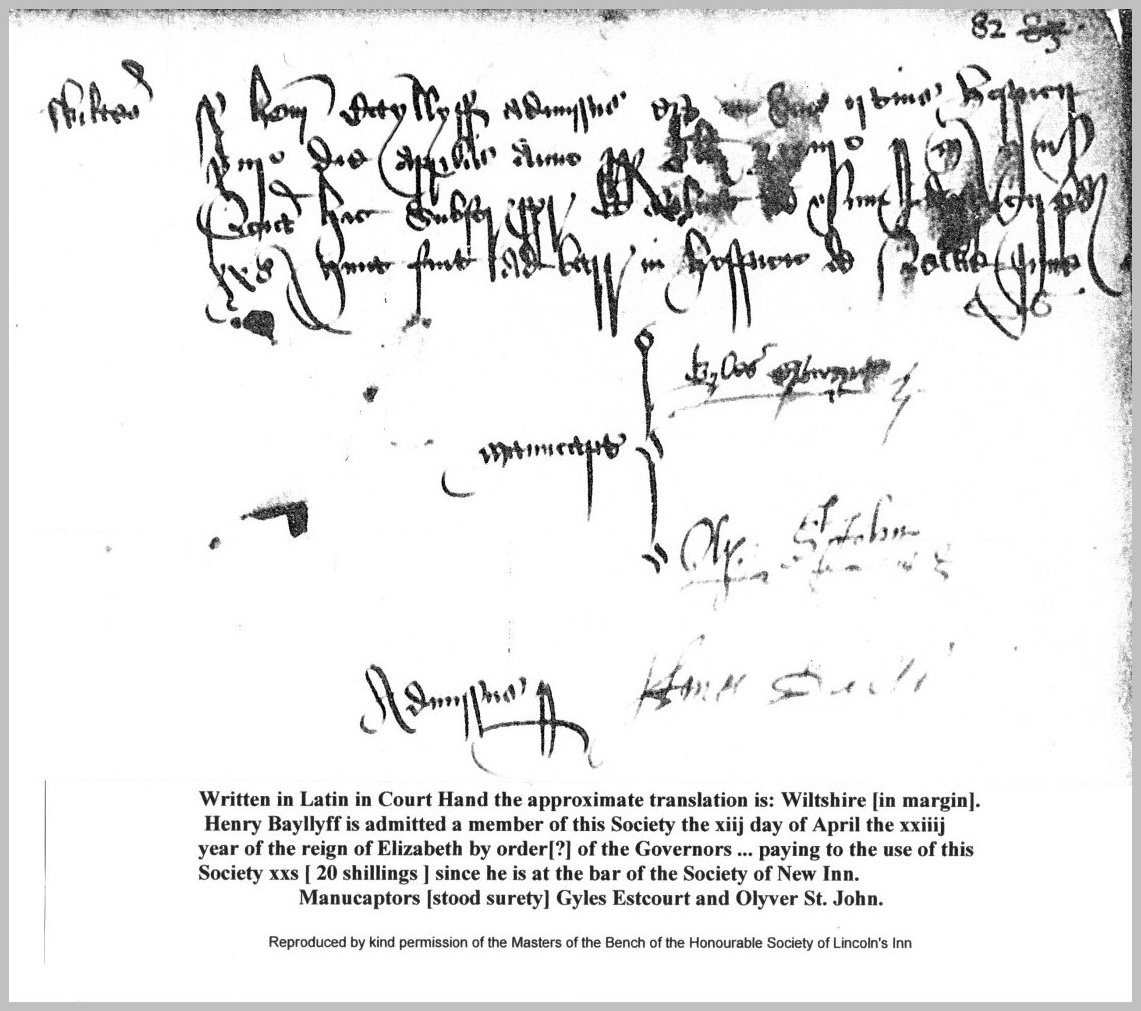
(Reproduced by kind permission of the Masters of the Bench of The Honourable Society of Lincoln's Inn) |
|||||||||||||||||||||||||||||||||||||||||||||||||||||||||||||||||||||||||||||||||||||||||||||||||||||||||||||||||||
| Section 4 | |||||||||||||||||||||||||||||||||||||||||||||||||||||||||||||||||||||||||||||||||||||||||||||||||||||||||||||||||||
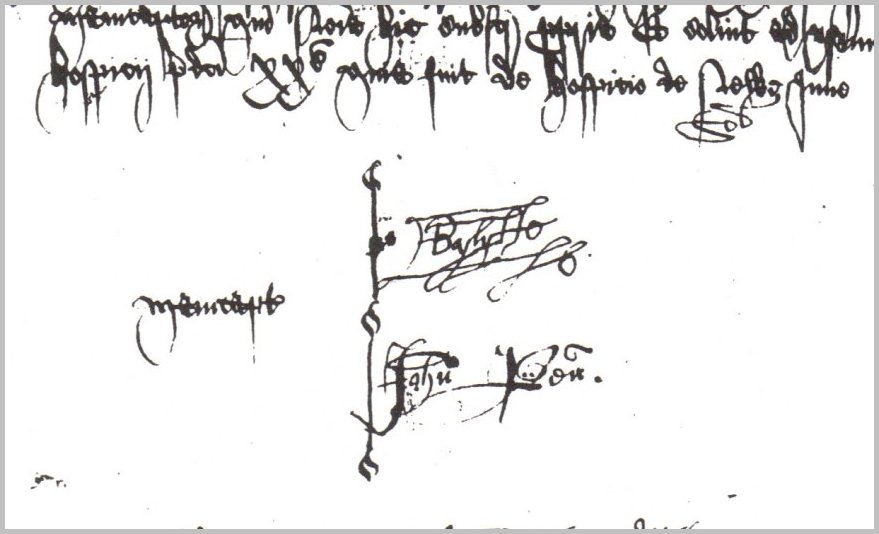
(Reproduced by kind permission of the Masters of the Bench of The Honourable Society of Lincoln's Inn) |
|||||||||||||||||||||||||||||||||||||||||||||||||||||||||||||||||||||||||||||||||||||||||||||||||||||||||||||||||||
| Section 5 | |||||||||||||||||||||||||||||||||||||||||||||||||||||||||||||||||||||||||||||||||||||||||||||||||||||||||||||||||||
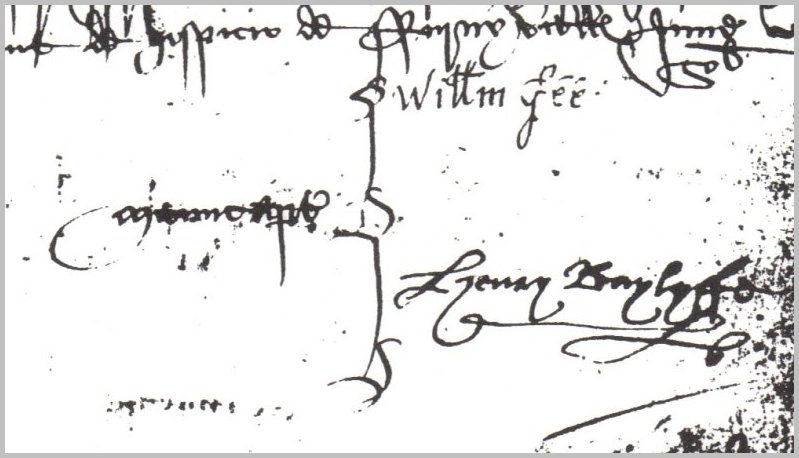
Section 6
|
|
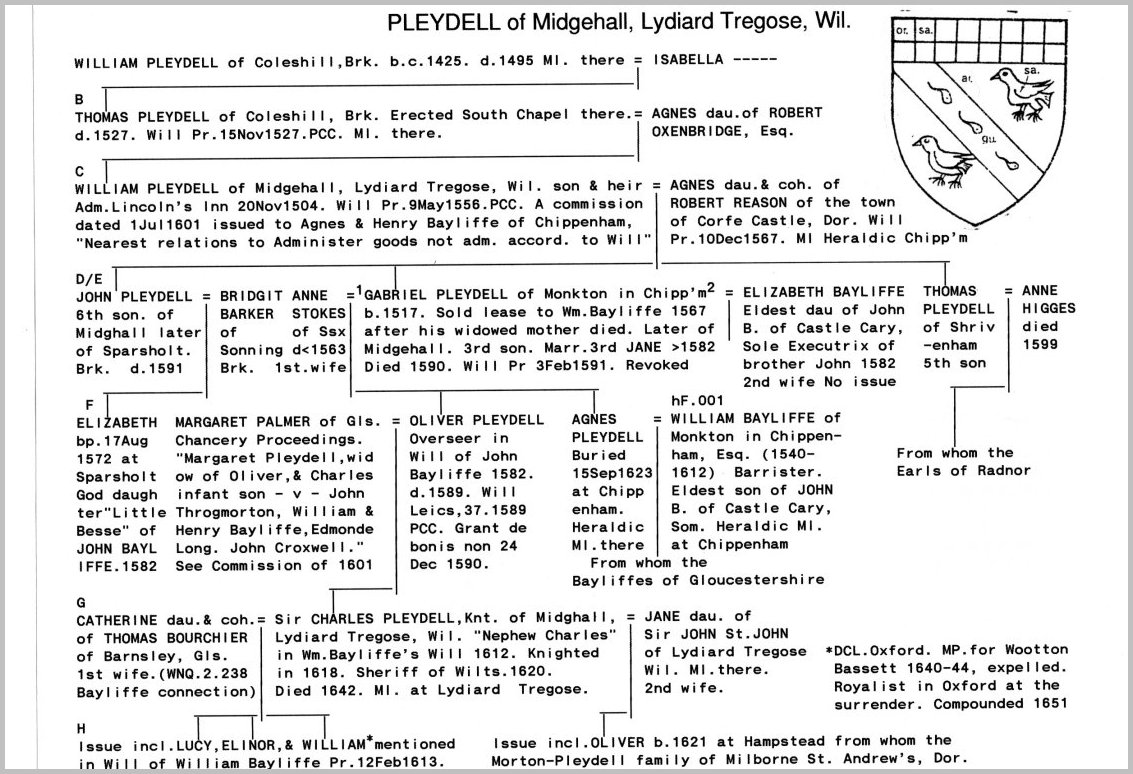
Section 7
|
|
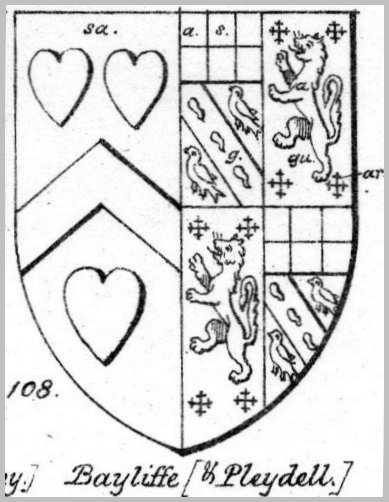
(Wiltshire Collections - 1862 - p.72 & Plate 11. Shield 108)
Section 8
|
|
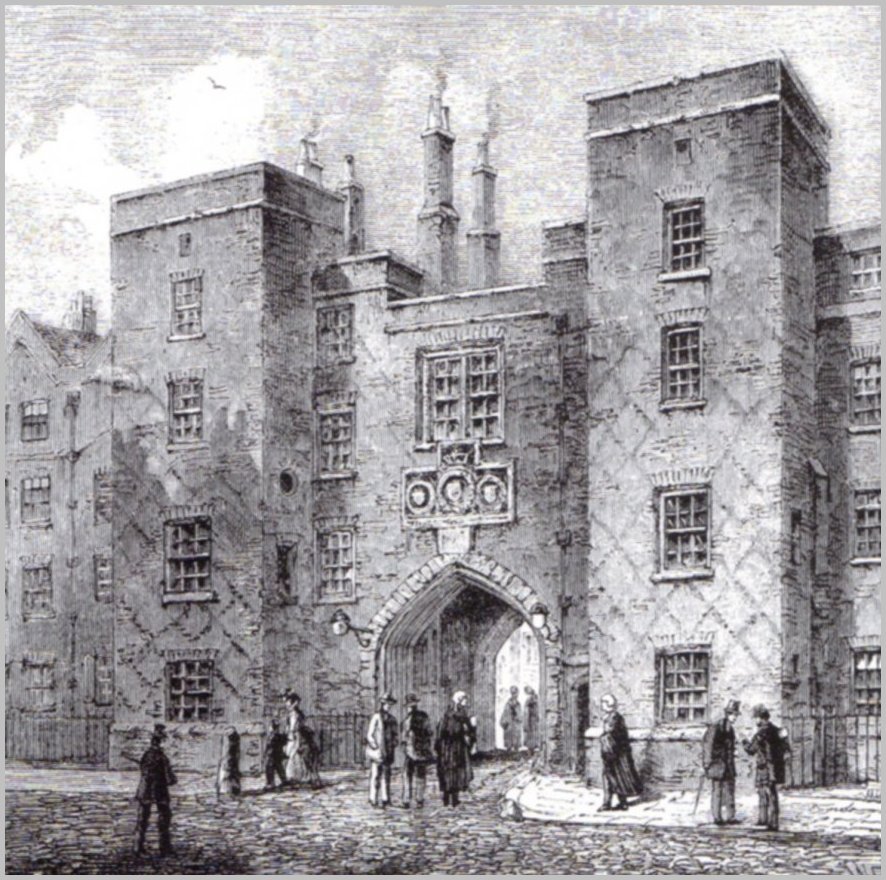
The Gatehouse, Lincoln's Inn, Chancery Lane - 1600
Section 9
|
|
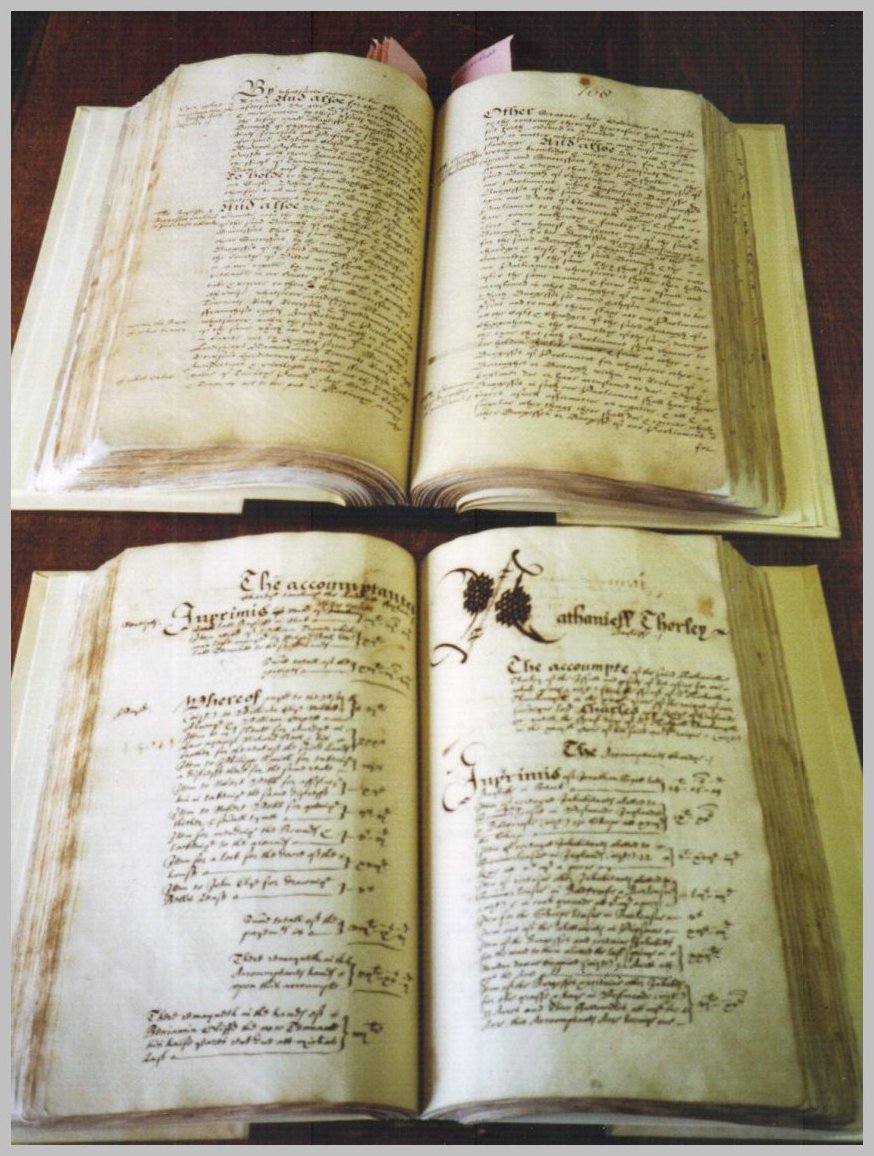
Section 10
|
|
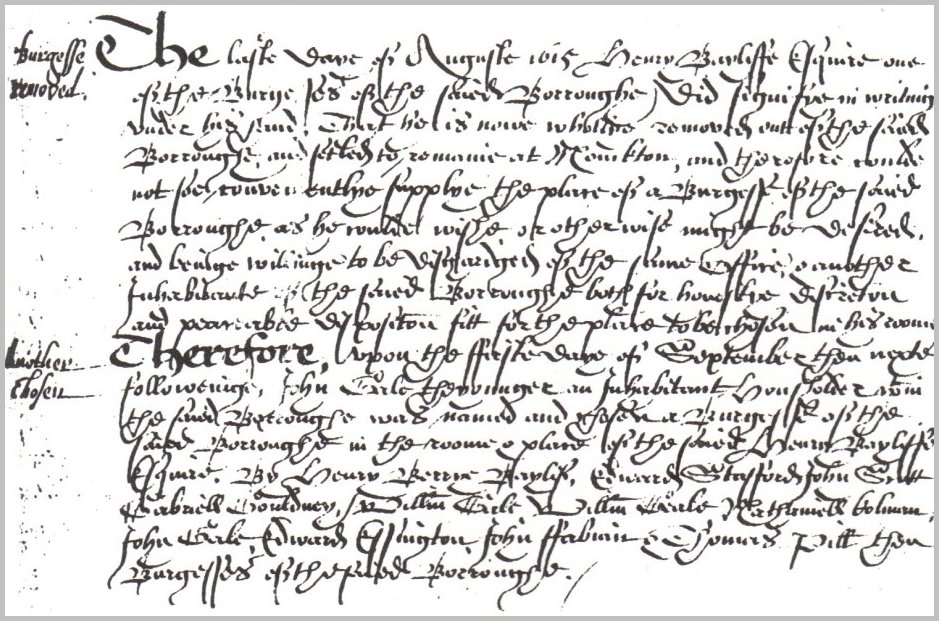
Section 11
|
|
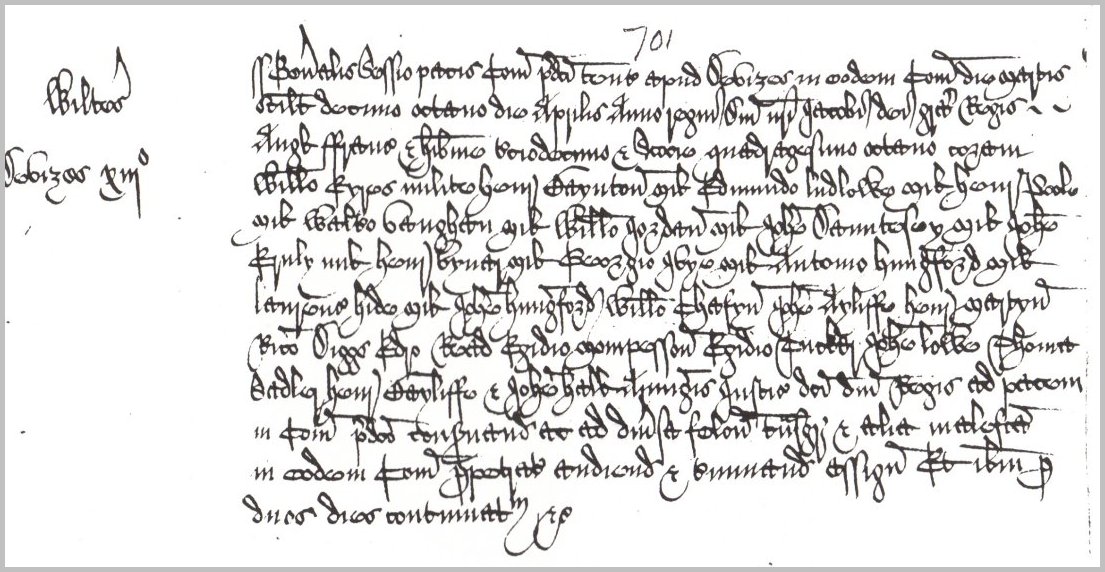
Section 12
|
|
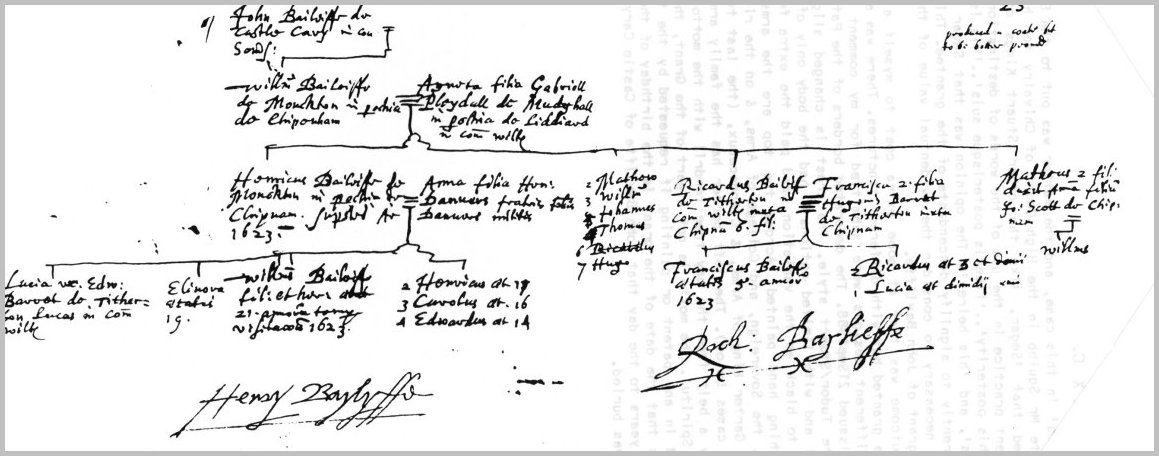
(signed by Henry Bayliffe & brother Richard)
Section 13
|
|
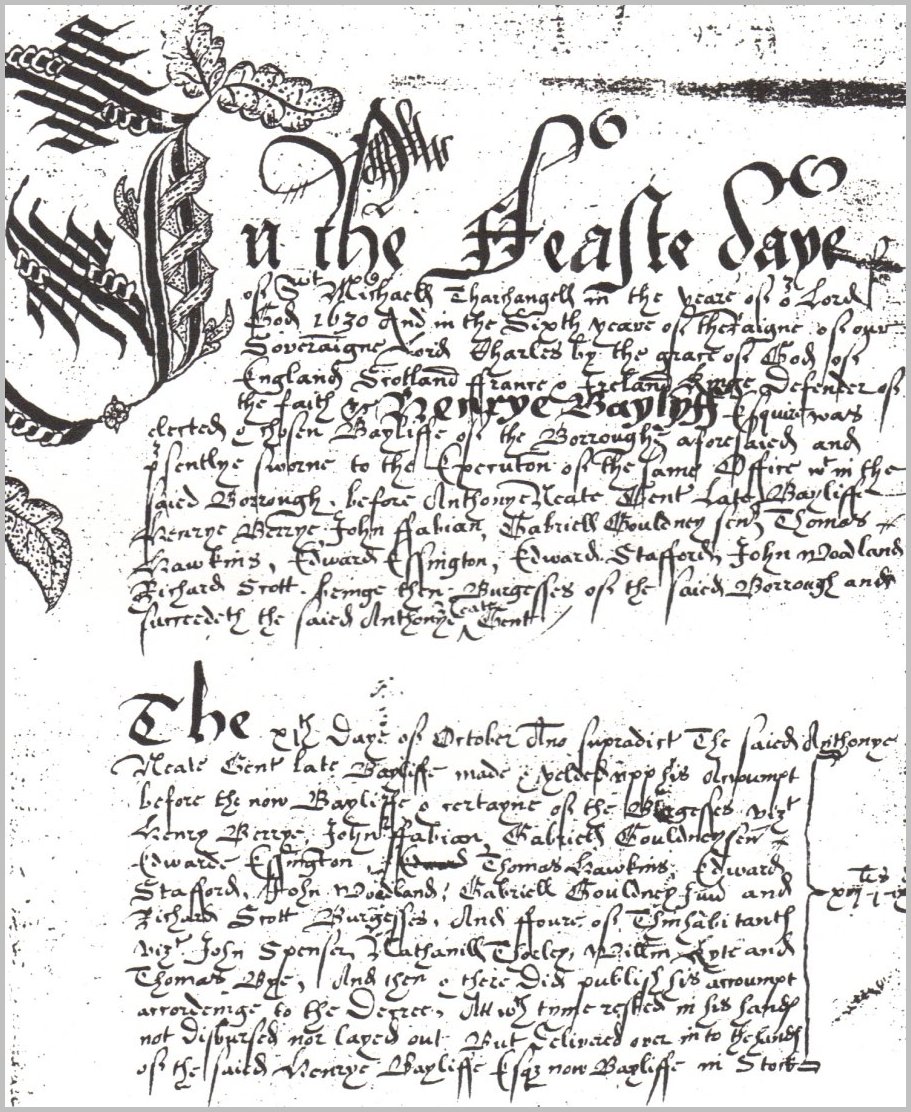
Section 14
|
|
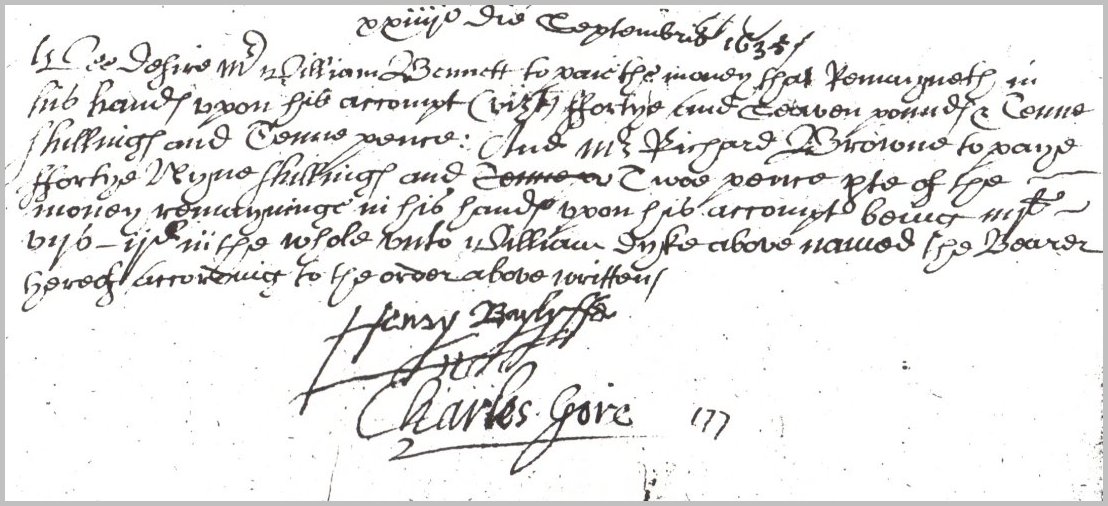
Section 15
|
|
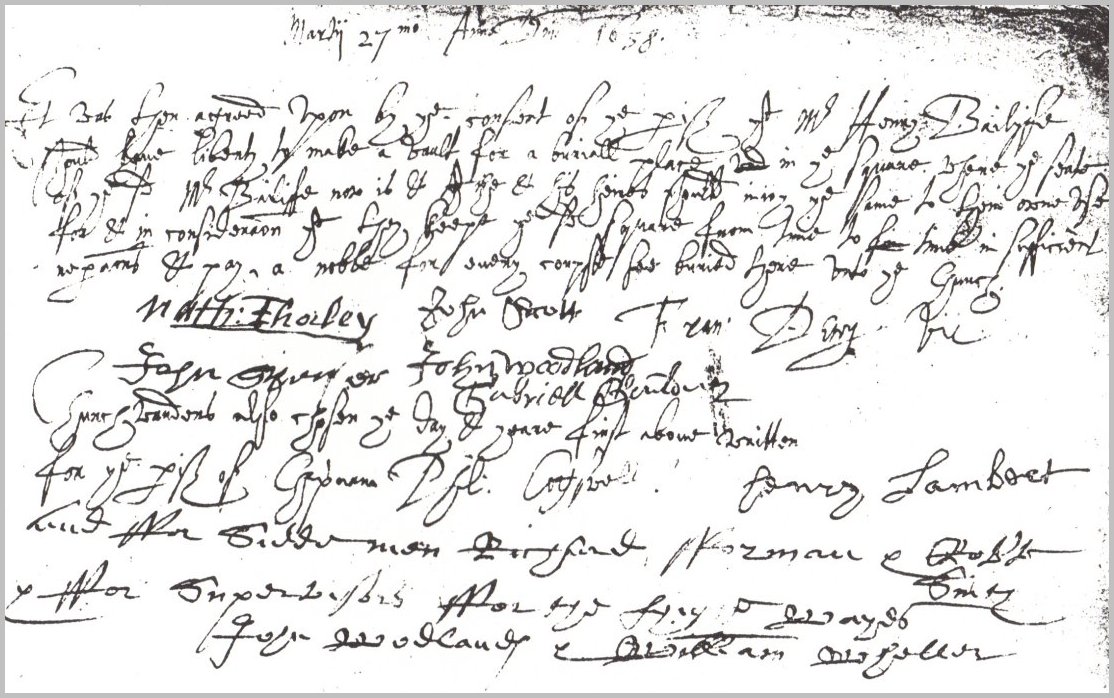
in St. Andrew's Church, Chippenham - 1638
Section 16
|
|
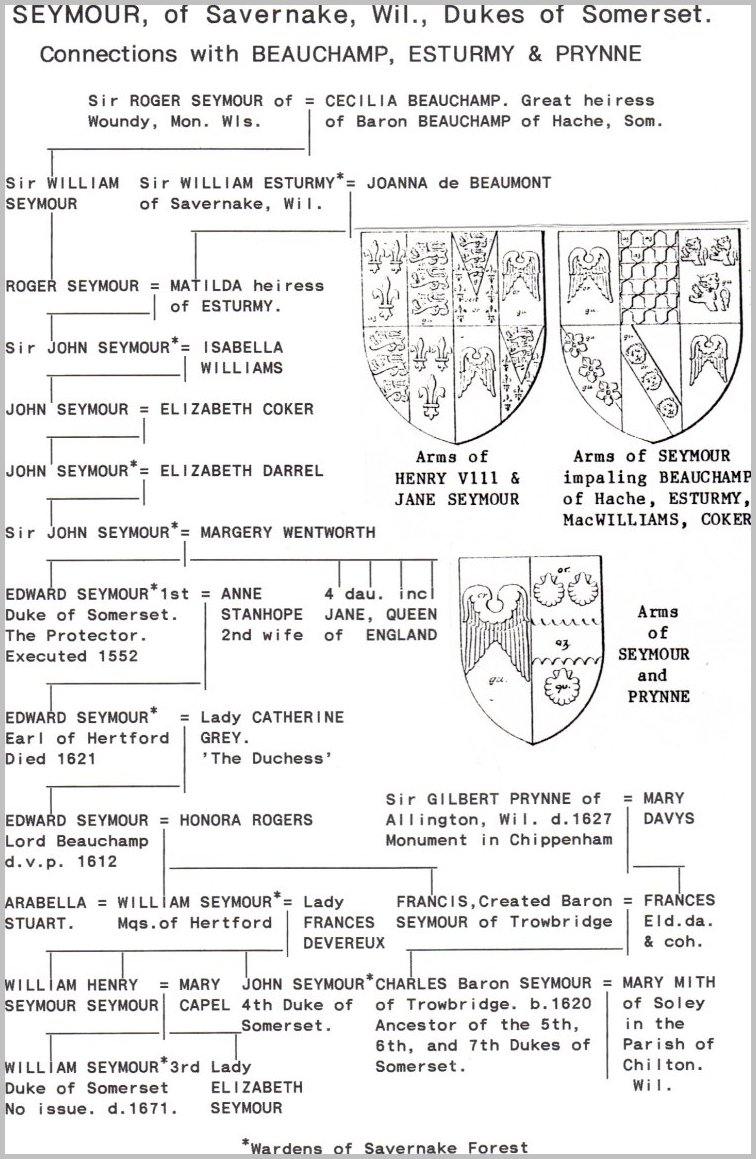
Section 17
|
|
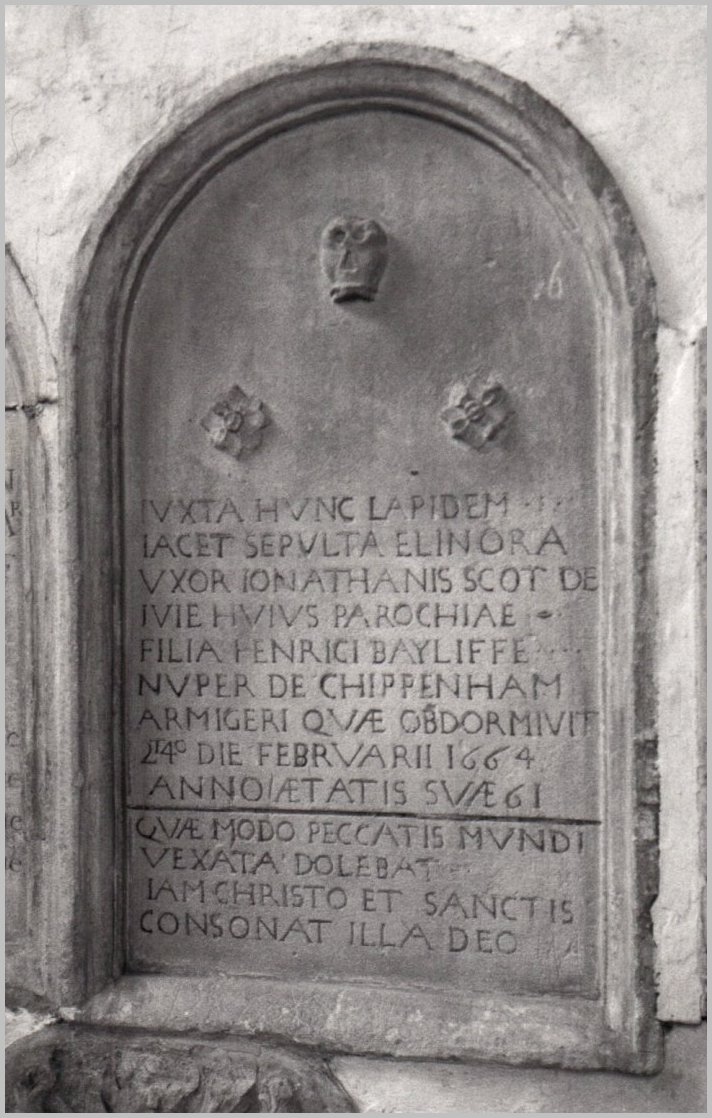
to Eleanor Scott daughter of Henry Bayliffe - 1664
Section 18
|
|
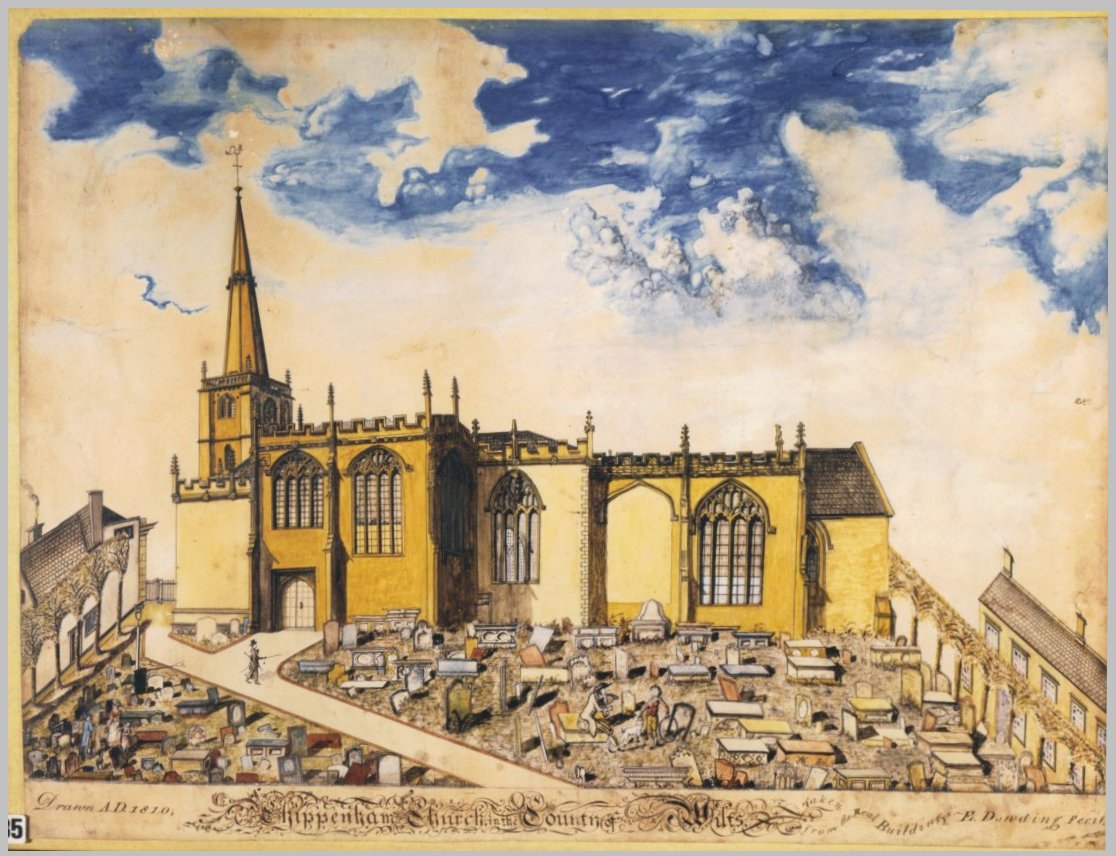
Painting in naïve style by E. Dowding - 1810
Section 19
|
|
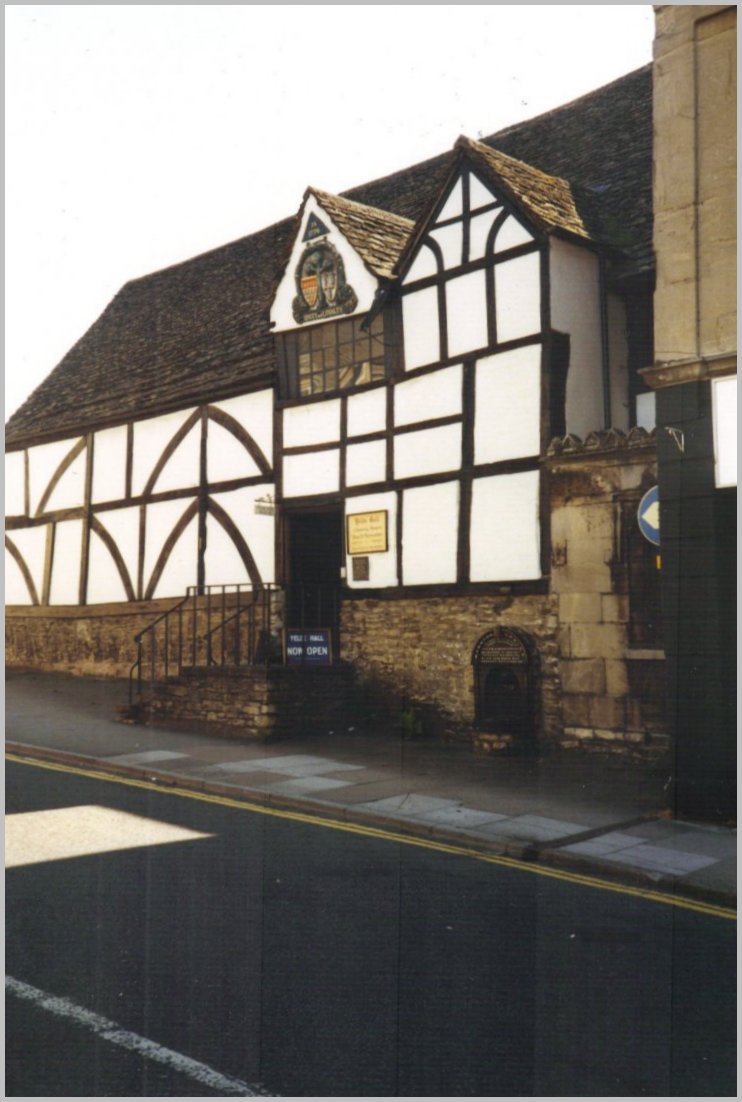
Section 20
|
|
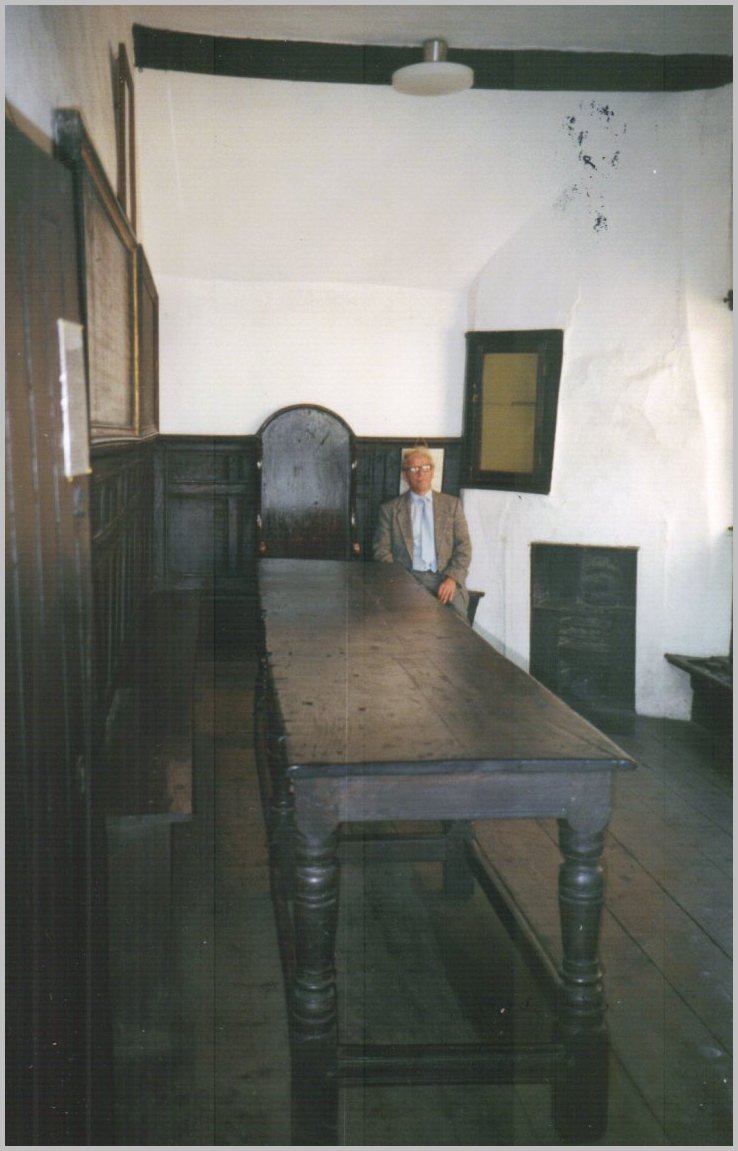
Section 21
|
|
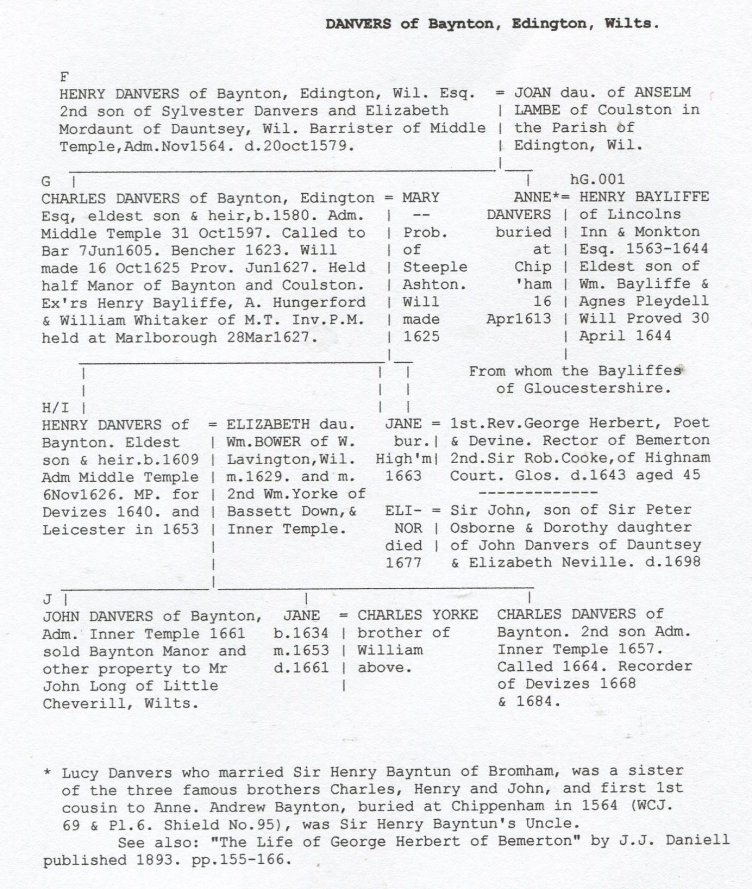
Section 22
|
|
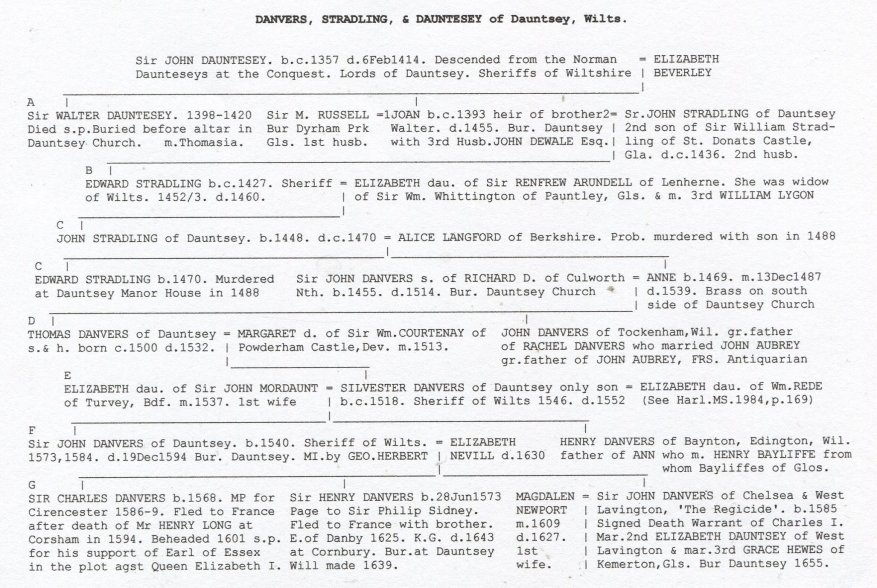
Section 23: Notes and Sources |
|
NOTE: My thanks are due to Julian Rawes for his input and constructing this web site, and Alan Merryweather for support and proof reading. Bryant G Bayliffe. 1 March 2009
|
|
| |||||||||||||||||||||||||||||||||||||||||||||||||||||||||||||||||||||||||||||